Who will win the Dutch Election? We crunch the numbers to find out
A complete guide to the first of three crucial elections for Europe in 2017.
Election time has come in the Low countries and on March 15 the Netherlands will decide who will fill the 150-seat lower house of parliament. But with more parties than ever vying for power, a majority of voters have yet to make up their minds.
The first of three elections in the European Union in 2017, the Dutch poll is set to take the pulse of continental Europe following the vote for Brexit in the UK and for Donald Trump as US President in 2016. Like in Britain and the US, there has been a populist right wing backlash in Holland and rising dissatisfaction with mainstream parties. The question is: will that be reflected at the ballot box?
Who can vote?
Anyone who has Dutch nationality and is aged 18 or over can vote. Dutch citizens living abroad are also eligible to vote via proxy or postal vote.
A total of 12.9 million people are eligible to vote in the upcoming election.
Voter turnout in The Netherlands is relatively high. Since compulsory voting was abolished in 1972, Dutch voter turnout has on average been around 75%, significantly higher than the European average of 68%.
How does the election work?
General elections for the Dutch House of Representatives are typically held every four years. The electoral system in the Netherlands is proportional representation, meaning that parties gain seats in proportion to the number of votes cast for them. A party must win 76 of the 150 parliamentary seats available to rule independently. No party has ever reached this threshold and the largest parties have always ruled together in a coalition government.
28 parties will participate in this year's election, the record since 1922 (when 53 parties were on the ballot). Of these 28, 11 parties currently hold seats in the House of Representatives. A total of 114,393 candidates are taking part in the election. They are chosen by voters from an open party list. The oldest candidate this year is 93: the youngest is 17. Both are candidates for the Animal Party (PvdD), environmentalists with a focus on social issues.
How many Muslims are there in the Netherlands?
The Netherlands is a country of around 16 million people, roughly 5% of which identify as Muslim. People of Turkish origin are the biggest immigrant population followed my Moroccans and Indonesians (a former Dutch colony).
Muslim immigration to the Netherlands began when so-called "guest workers" from Turkey and Morocco were invited by the Dutch government to work in the country during the economic boom of the mid-1960s.
In the 1970s the migrant population expanded due to the family reunification scheme and to increased immigration from former Dutch colonies such as Indonesia.
What about immigration from other states?
Also in the 1970s, the Netherlands saw immigration from its former colonies in the Caribbean, as well as Suriname. There are also over 1.6 million residents from the West.
Breakdown of immigrant population
Western countries: 1,655,699
Non-western countries: 2,096,592, of which:
- Turkey: 397,471
- Morocco: 385,761
- Suriname: 349,022
- Dutch Antilles & Aruba: 150,981
- Other non-western countries: 813,357
No more than a week after the election the House of Representatives holds a debate about the outcome. At the debate an informateur is chosen to review which coalition of political parties could form a viable cabinet. The role is generally filled by a representative from the winning party. After the informateur has presented the findings, a formateur, usually the new prime minister, negotiates the final coalition agreement.
The formation process can take a long time. Since 1977 it has taken an average 86 days for each of the 13 cabinets to be formed.
It is not necessarily the case that the party with the most votes will end up in the coalition. Geert Wilders, the far-right leader of the Freedom Party (PVV), is currently second in the polls but is unlikely to make it into the government as all the major parties have ruled out collaborating with him. In a head-to-head debate on 13 March, Prime Minister Mark Rutte told his political rival that he will never work with him again. Wilders was responsible for the collapse of the coalition in 2012 when he walked away from Rutte's minority cabinet following an impasse about the state budget.
When will the results be known?
After the polling stations close at 9 pm, the unofficial outcome is published based on exit polls. The official result will be announced on 21 March at 4 pm by the Electoral Commission. This year voting ballots will be counted by hand for the first time as the Dutch government was warned that the electronic software used in previous elections was extremely susceptible to Russian hackers.
What are the main issues?
Immigration and healthcare are the two issues dominating the election. At the debate on 13 March, Rutte and Wilders clashed over EU membership and the migrant deal with Turkey which the far-right leader described as "life-threatening." He accused the prime minister of allowing himself to "be held hostage" by Turkish President Recep Tayyip Erdogan.
Rutte attacked Wilders for offering "fake solutions" to deal with rising immigration, including the closure of the country's borders and banning the Quran. In response to Wilders' claim that The Netherlands leaving the EU would be "the best thing that could happen to us", Rutte said a 'Nexit' would cost The Netherlands 1.5 million jobs and create "chaos."
Who are the frontrunners?
Prime Minister Mark Rutte's Freedom and Democracy Party (VVD) is currently leading in the polls, predicted to win between 24 and 28 seats. Geert Wilders' Freedom Party (PVV) recently dropped to second place, for the first time since November. The PVV is expected to win between 20 and 24 seats. Jesse Klaver's Green Party is set to make major gains, becoming the largest left-wing party in parliament following the demise of the Labour Party (PvdA) which has lost the support of its base after ruling in a coalition with the VVD for five years. The centrist parties Christian Democratic Alliance (CDA) and D66 are both predicted to win between 17 and 20 seats.
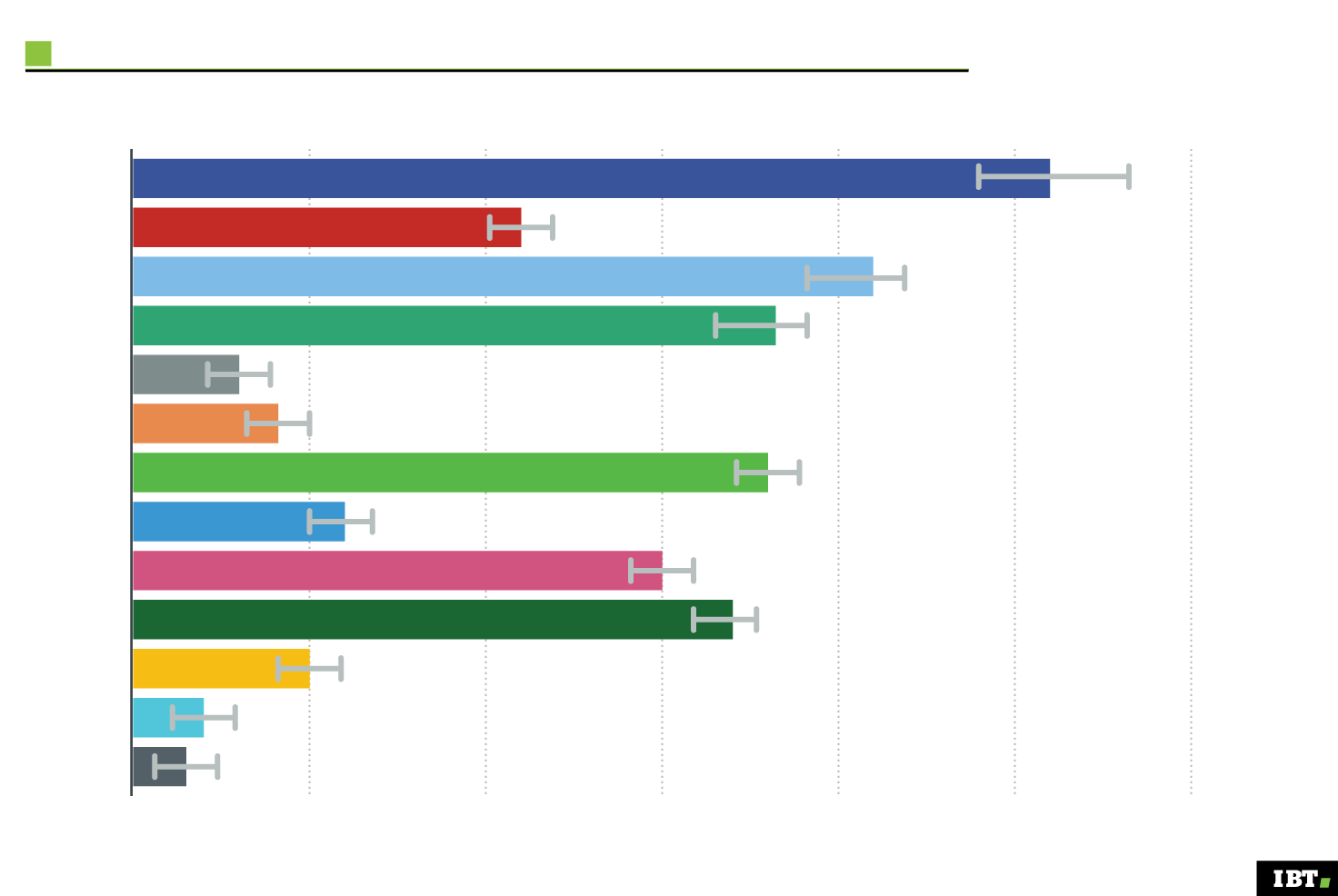
Support for each party and projected seats
Final polls ahead of 15 March election place VVD in the lead.
VVD
PvdA
PVV
CDA
SGP
50plus
D66
CU
SP
GL
PvdD
Denk
Others
0
5
10
15
20
25
30
Source: Peilingwijzer.tomlouwerse.nl
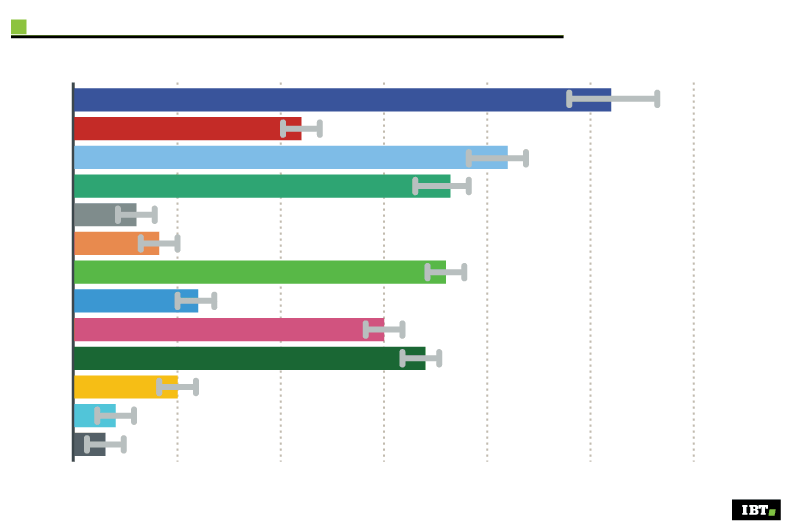
Support for each party and projected seats
Final polls ahead of 15 March election place VVD in the lead.
VVD
PvdA
PVV
CDA
SGP
50plus
D66
CU
SP
GL
PvdD
Denk
Others
0
5
10
15
20
25
30
Source: Peilingwijzer.tomlouwerse.nl
Why does the Dutch election matter for Europe and the rest of the world?
The Dutch election is the first of three major elections occurring in key European Union countries such as France and Germany in 2017. The victory of Wilders' Eurosceptic far-right Freedom Party would both follow the trend set by the Brexit referendum and Donald Trump's victory in 2016 in a shift to anti-immigrant, nationalist sentiment, and foreshadow more victories by populist parties across the continent.
Dutch populism and Euroscepticism has been more than 10 years in the making. Even before Wilders funded its Freedom Party, he was a driving force behind the campaign against the EU constitution in 2005, which the Dutch public rejected with an almost 62% majority. Wilders successfully campaigned in a 2016 referendum against a EU free trade deal with Ukraine, delaying the deal implementation.
But against the backdrop of Wilders' rising popularity, there is a long history of the Netherlands participation in international alliances, starting from the 1944 Benelux union with Belgium and Luxemburg to the 1951 European Coal and Steel Community, the precursor to what was to become the European Union, including the Benelux countries, West Germany, France and Italy. The EU in its current shape and form was created through the 1992 Treaty of Maastricht, a Dutch town bordering Belgium and Germany.
Wilders' anti-EU ethos driven by nationalist principles rather than policy considerations. Speaking to the press on 13 March, Rutte said he is worried about how a victory for Wilders would reflect on the country's reputation abroad - the Netherlands, known for its progressive politics and liberal economics, becoming a bedrock of xenophobia, protectionism and populism. He said: "I am worried about Wilders becoming the biggest party, I am worried about how the Netherlands will be seen in the rest of the world, and this motivates me to win the election."
What's changed since the last election?
Support for the ruling coalition been shaky from the start of their governing experience in late 2012. Feeling disappointed by the traditional centre-right and centre-left represented by the coalition, voters flocked to less moderate parties, such as the far-right Freedom Party (PVV), and the progressive leftist Green party (GL).
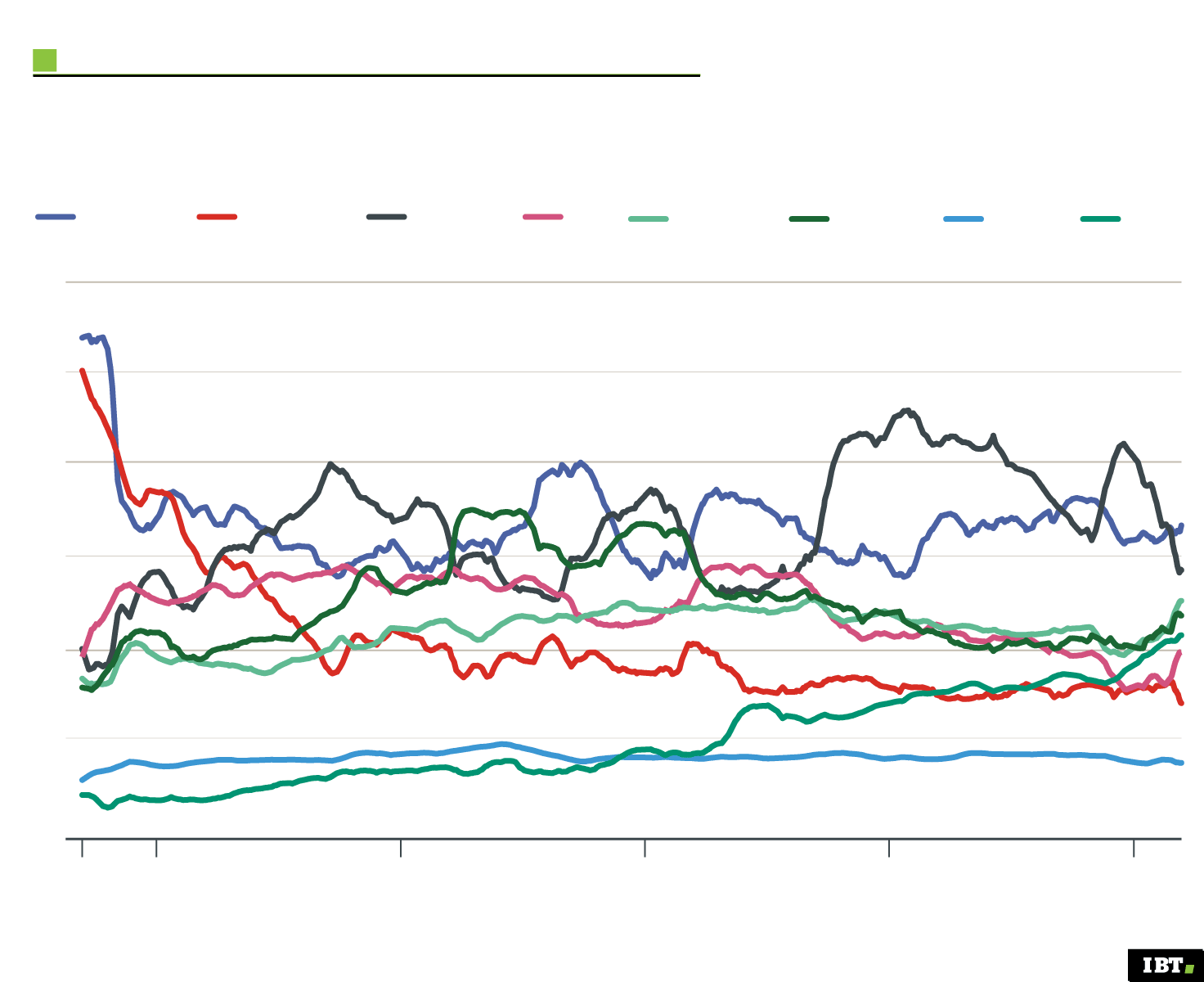
Dutch voting sentiment
Support for the ruling coalition (VVD PvdA) has been shaky from the start,
allowing parties such as PVV and GL to grow their popularity.
VVD
PvdA
PVV
SP
CDA
D66
CU
GL
30%
20%
10%
0
Sept
2012
2014
2015
2016
2017
2013
Source: Peilingwijzer.tomlouwerse.nl
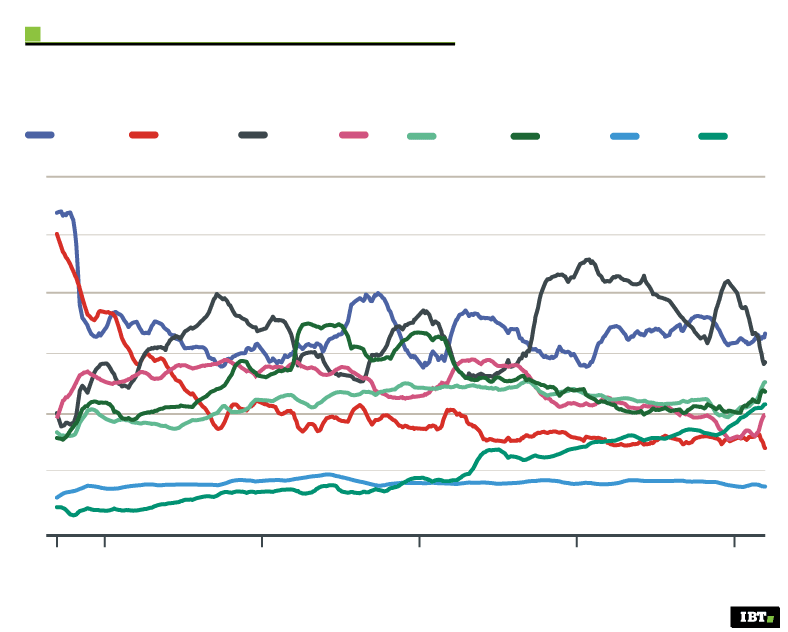
Dutch voting sentiment
Support for the ruling coalition (VVD PvdA) has been shaky from the start,
allowing parties such as PVV and GL to grow their popularity.
VVD
PvdA
PVV
SP
CDA
D66
CU
GL
30%
20%
10%
0
Sept
2012
2014
2015
2016
2017
2013
Source: Peilingwijzer.tomlouwerse.nl
All other parties, including the centrist Christian-Democrats (CDA), liberal-progressive D66, traditionally left wing Socialist Party and the various minor Christian parties, have mostly consolidated, if not slightly increased, their support among the electorate.
After its creation in 2006, the Freedom Party grew from 9 to 24 seats in the following election in 2010. Affirming itself as the country's third biggest party, it was then punished by voters in 2012 after it withdrew support from the Rutte-led minority government, only winning 15 seats.
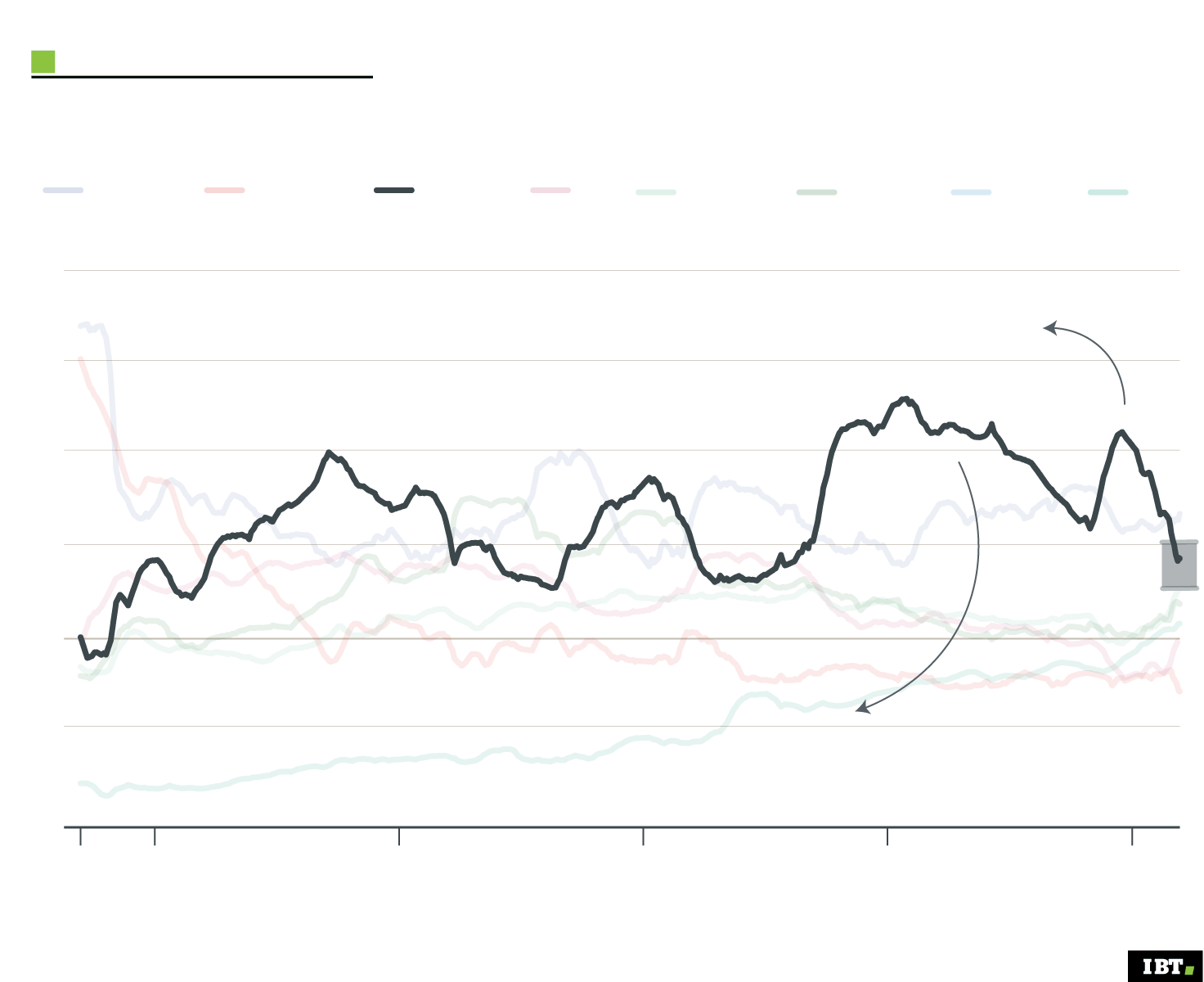
PVV support
2017 could be another comeback moment for Geert Wilders’ PVV.
VVD
PvdA
PVV
SP
CDA
D66
CU
GL
30%
Geert Wilders is convicted
for hate speech
20%
10%
Geert Wilders leads campaign
against Ukraine free trade deal
0
Sept
2012
2014
2015
2016
2017
2013
Source: Peilingwijzer.tomlouwerse.nl
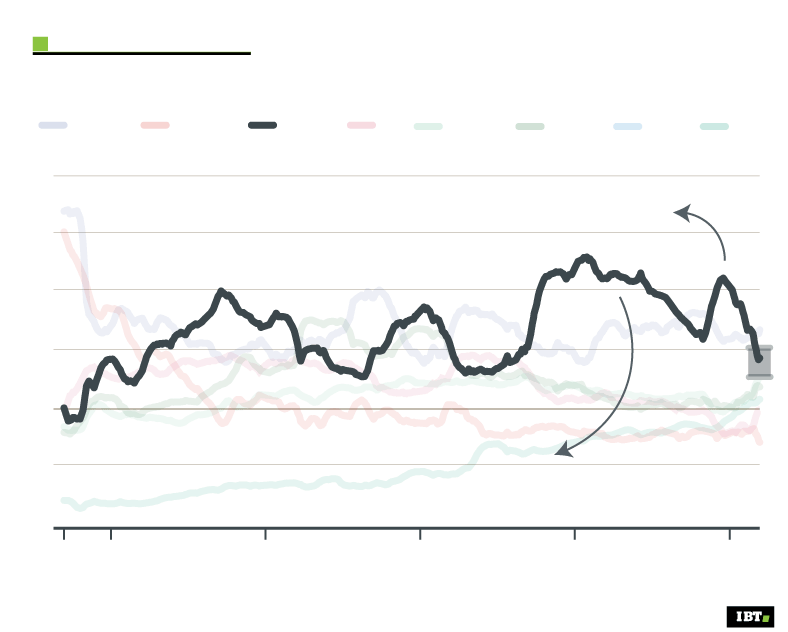
PVV support
2017 could be another comeback moment for Geert Wilders’ PVV.
VVD
PvdA
PVV
SP
CDA
D66
CU
GL
30%
Geert Wilders is convicted
for hate speech
20%
10%
Geert Wilders leads campaign
against Ukraine free trade deal
0
Sept
2012
2014
2015
2016
2017
2013
Source: Peilingwijzer.tomlouwerse.nl
2017 could be another comeback moment for the PVV, with the party recovering its position of prominence in parliament. But whether it will outdo its previous record of 24 seats remains to be seen, as the party's popularity trend is negative. After surging in the polls following the 2015 refugee crisis and throughout the referendum campaign against the free trade deal with Ukraine, the party fell behind the ruling VVD.
Wilders' hate speech trial however increased the party's popularity once again, although the effect seemed to have waned in the last few weeks of campaign. Dutch political expert Eddy Habben Jansen, director of the think tank ProDemos, told IBTimes UK at the time of the trial: "According to opinion polls his support is already substantial, but there have been a lot of fluctuations and I would not make any predictions on the election based on the opinion polls," he added.
The Green party has been the only one who has steadily, significantly increased its popularity since the past election. A party that encapsulates both environmental and socialist policies, it went through a leadership crisis around the time of the 2012 election which affected its performance at the ballots.
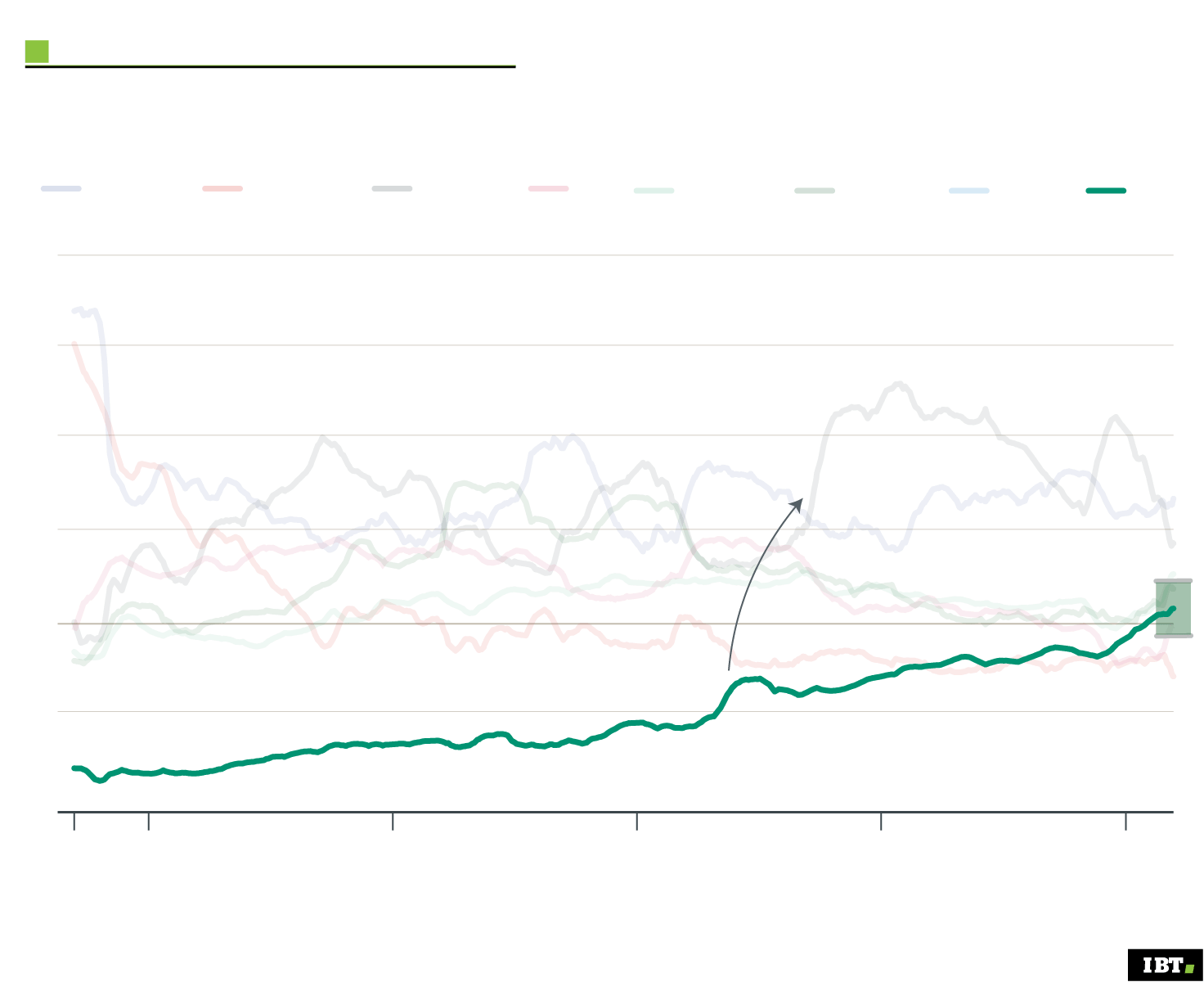
Groenlinks support
Groenlinks (Green Party) has consistently grown its popularity since 2012.
VVD
PvdA
PVV
SP
CDA
D66
CU
GL
30%
20%
Green Party elects new
leader Jesse Klaver in
May 2015
10%
0
Sept
2012
2014
2015
2016
2017
2013
Source: Peilingwijzer.tomlouwerse.nl
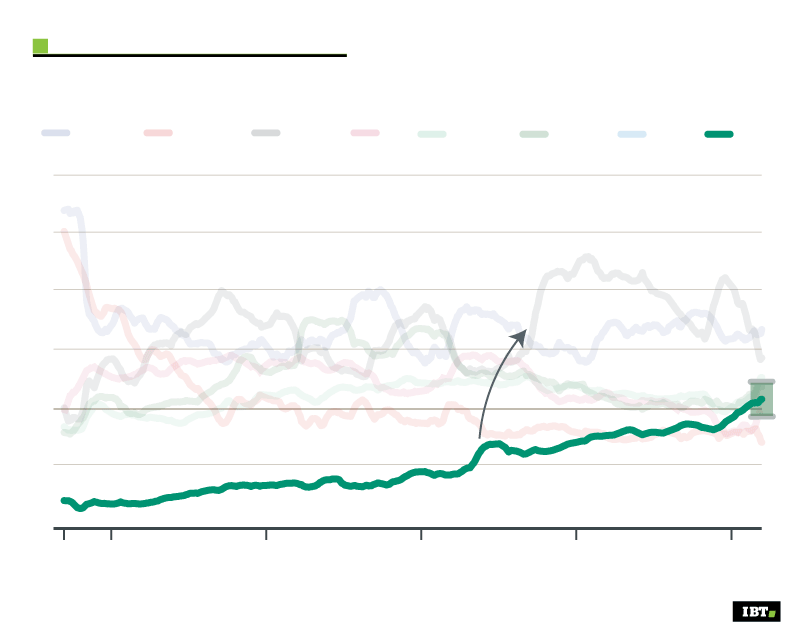
Groenlinks support
Groenlinks (Green Party) has consistently grown its popularity since 2012.
VVD
PvdA
PVV
SP
CDA
D66
CU
GL
30%
20%
Green Party elects new
leader Jesse Klaver in
May 2015
10%
0
Sept
2012
2014
2015
2016
2017
2013
Source: Peilingwijzer.tomlouwerse.nl
Aided by the election of 30-year-old Jesse Klaver to its leadership in May 2015, the party is predicted a four-fold increase in seats, from 4 to at least 16. Klaver is seen as an appealing fresh face in politics, appealing to both radical and moderate left-wing voters who were left disappointed by Labour party coalition government with the liberal VVD.
Often compared to the young prime minister of Canada Justin Trudeau, Klaver proposes a progressive, left-wing agenda to counter Wilders' populism. In an interview with Reuters, he said his party would increase spending on renewable energy and address social problems that have led 40 percent of Moroccan and Turkish immigrants to feel unwelcome.
The ruling coalition parties have lost popularity since the moment they came into power. But whereas the centre-right voters have not completely deserted the party, and actually, during trying times such as the MH17 plane crash in the summer of 2014 and the refugee crisis of the summer of 2015, strengthened support for the prime minister's party.
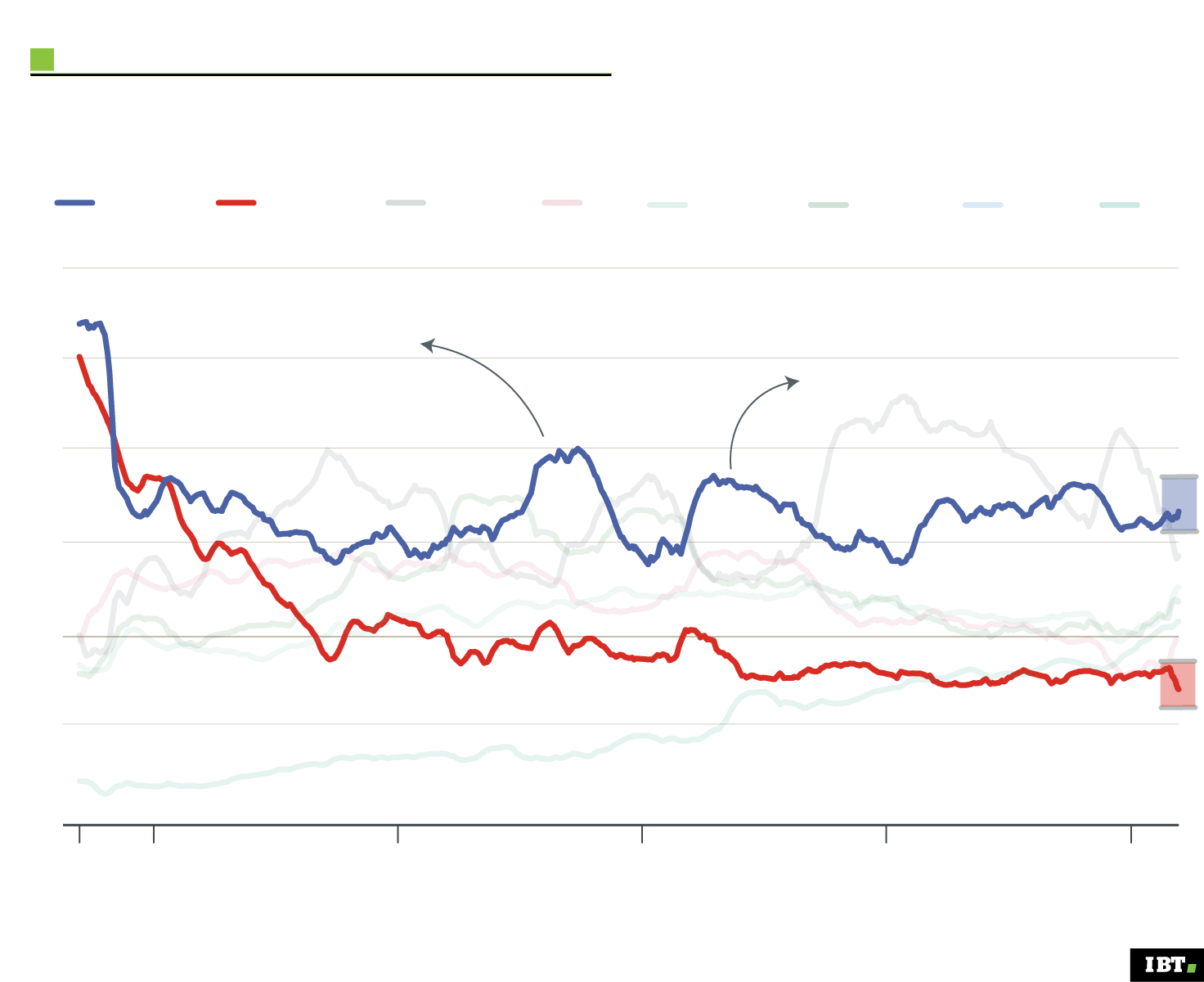
VVD and PvdA support
The two ruling parties have lost significant support and while VVD is still
the country’s largest party, the PvdA has fallen below 10%.
VVD
PvdA
PVV
SP
CDA
D66
CU
GL
30%
MH17 shot down in Ukraine
Refugee crisis
20%
10%
0
Sept
2012
2014
2015
2016
2017
2013
Source: Peilingwijzer.tomlouwerse.nl
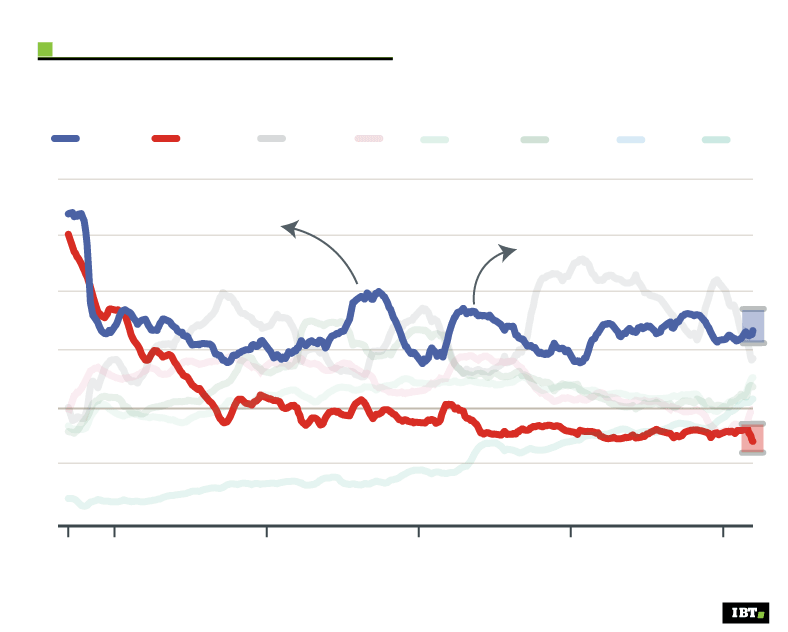
VVD and PvdA support
The two ruling parties have lost significant support and while VVD is still
the country’s largest party, the PvdA has fallen below 10%.
VVD
PvdA
PVV
SP
CDA
D66
CU
GL
30%
MH17 shot down in Ukraine
Refugee crisis
20%
10%
0
Sept
2012
2014
2015
2016
2017
2013
Source: Peilingwijzer.tomlouwerse.nl
Conversely, the downward trend suffered by the centre-left Labour party (PvdA) has seen almost no respite. Not even a change of leadership ahead of the election in December 2016 could improve the party's standing. For the past two years, the party has polled below 10% of the preferences, mostly due to dissatisfaction with the policies implemented while in government. Asked whether the coalition government ruined the Labour party's decade-long reputation for the party of the workers, PvdA minister for social affairs and employment Jette Klijnsma told IBTimes UK: ""I can completely understand that people have decided to no longer vote for the PvdA. Many people voted for my party to keep Rutte out of the tower in The Hague [Prime Minister's office]. It is rotten for them that we ended up in a coalition [with his party.]
"We took responsibility and ensured that social issues were high on the agenda, much higher [than they would have been] under a right-wing cabinet. I hope that voters will realise that by ruling in the coalition we put the country back on track."
Who are the biggest winners and losers?
The ruling parties are these elections' biggest losers. The Labour party is expected to lose more than two thirds of its seats. Less disastrously, the VVD is due to lose less than half of its seats and still has a chance to be confirmed as the biggest party in the country.
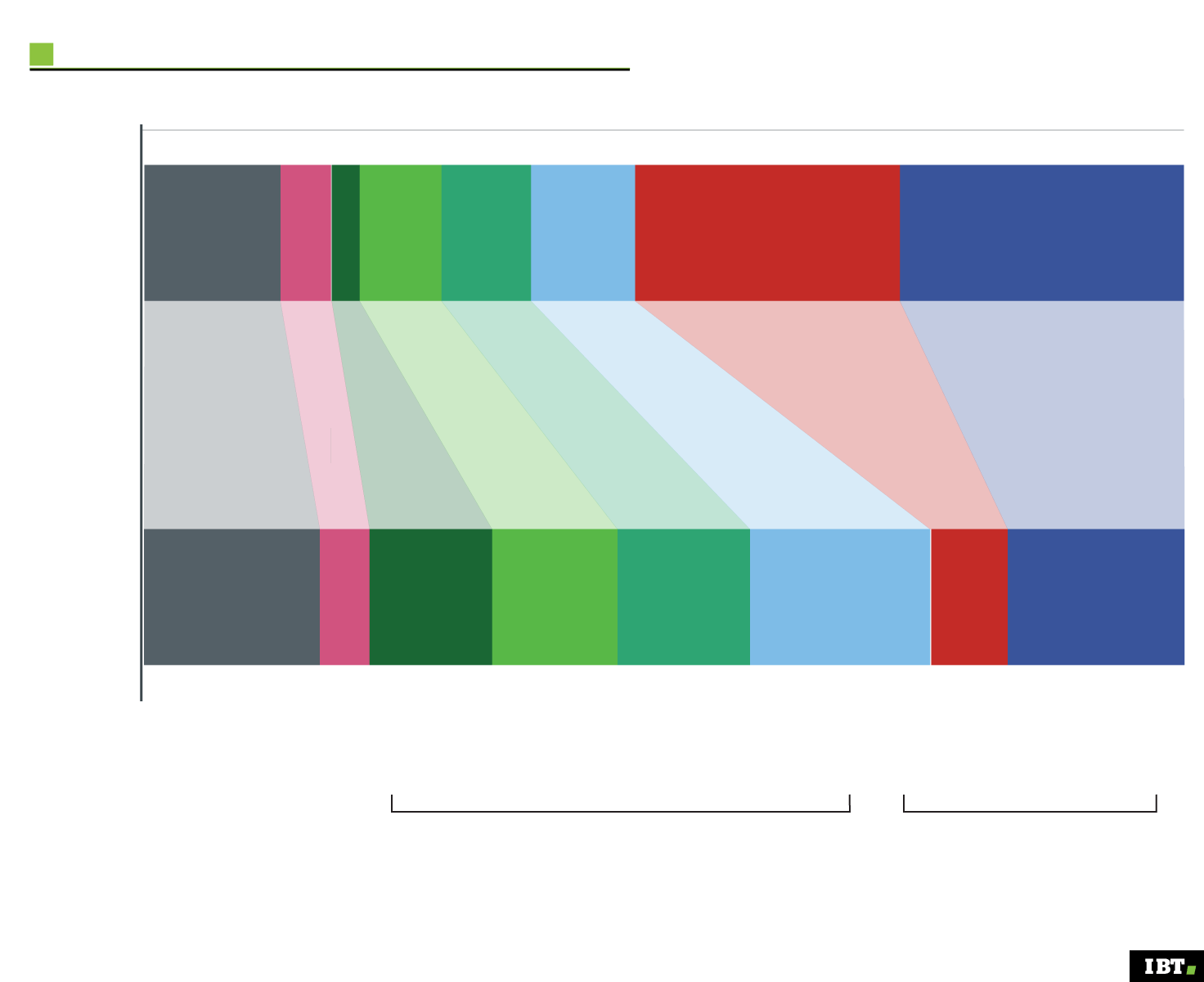
Who wins and who loses
0
100
150
50
2012
2017
Others*
SP
GL
D66
CDA
PVV
PvdA
VVD
22
seats
( 8)
15
seats
(0)
17
seats
( 13)
18
seats
( 6)
20
seats
( 7)
22
seats
( 7)
11
seats
(-27)
26
seats
(-15)
*SGP, 50Plus, CU,
PvdD, Denk, VNL,
FVD, Pirate Party
GL,
D66,
CDA
PVV
PvdA
VVD
&
&
are forecast to increase
their seats.
are set to lose many
of their seats.
Source: Peilingwijzer.tomlouwerse.nl
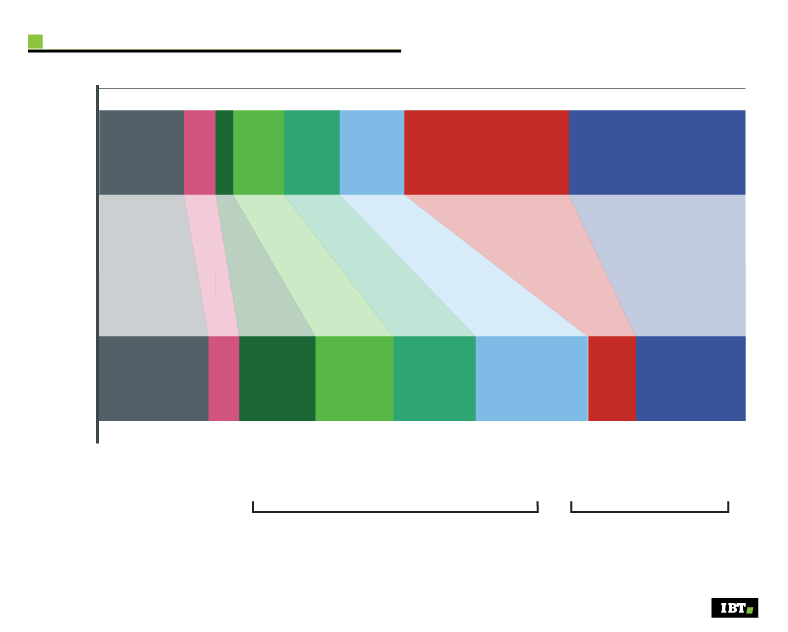
Who wins and who loses
0
50
100
150
2012
2017
Others*
SP
GL
D66
CDA
PVV
PvdA
VVD
22
seats
( 8)
15
seats
(0)
17
seats
( 13)
18
seats
( 6)
20
seats
( 7)
22
seats
( 7)
11
seats
(-27)
26
seats
(-15)
*SGP, 50Plus, CU,
PvdD, Denk, VNL,
FVD, Pirate Party
GL,
D66,
CDA
PVV
PvdA
VVD
&
&
are forecast to increase
their seats.
are set to lose many
of their seats.
Source: Peilingwijzer.tomlouwerse.nl
A likely outcome of the 2017 election is an extremely fragmented parliament as the losses of the main ruling parties have benefited a number of parties both at the centre and at the fringes of the political spectrum. Minor parties, grouped as "others" in the graph above, can also see a collective increase in their seats too, but not enough to be seen as credible coalition partners.
While the political spectrum is becoming more polarised and more populist parties are emerging on the back of Wilders' success, there are also a number of progressive parties, such as the Greens, the D66 and the CDA who are gaining the biggest share of the votes leaving the ruling parties - the centre of Dutch politics isn't lost as such, it is just more varied.
What are the possible coalitions?
The biggest indicator of the fractured political spectrum is how two parties could hold a majority of the seats in 2012 and form a coalition, but in the 2017 election at least four parties will have to come together to form a government.
Coalition-making is a long and bruising process. In 2012, it took two months of negotiations before the VVD and the PvdA were able to form a government. A four-party coalition is likely going to take longer still.
- Mainstream parties
A coalition between the major parties can be almost certainly excluded as all of them have ruled out forming a coalition with Wilders' party.

76
0
50
100
150
Mainstream
parties
Seats needed for
a majority
VVD
PvdA
PVV
CDA
Source: Peilingwijzer.tomlouwerse.nl

76
50
100
150
0
Mainstream
parties
Seats needed for
a majority
VVD
CDA
PvdA
PVV
Source: Peilingwijzer.tomlouwerse.nl
While the PVV is a potentially appealing partner considering the predicted success, it is also too extreme in its anti-Islam, anti-immigrants and anti-Europe proposals for the more moderate parties.
- Centre-left
A wholly centre-left coalition seems unlikely as the major left-wing parties would not be able to gather the necessary 75-seat majority, even with the support of the Christian-Democrats.

76
0
50
100
150
63
Centre-left
?
PvdA
SP
GL
CDA
Source: Peilingwijzer.tomlouwerse.nl

76
50
100
150
0
63
Centre-left
?
PvdA
SP
GL
CDA
Source: Peilingwijzer.tomlouwerse.nl
The Socialist Party (SP) has traditionally despised the less radical approach of the PvdA, and its overall mildly Eurosceptic stance would put the party at odds with the pro-EU Labour and Greens.
- Centre-right
The most likely coalition would feature the centre-right VVD under incumbent prime minister Mark Rutte, the centrist CDA and the liberal progressive D66.

76
0
50
100
150
64
PvdA
GL
or
Centre-right
11 seats
17 seats
VVD
D66
CDA
Source: Peilingwijzer.tomlouwerse.nl

76
0
50
100
150
64
PvdA
GL
or
Centre-right
11 seats
17 seats
VVD
CDA
D66
Source: Peilingwijzer.tomlouwerse.nl
The three parties would fall short of the 75-seat majority and may add to the trio a more left-wing party to consolidate the majority, or choose to rule in a minority government.
While the Greens would contribute more seats, their policy priorities are less of a good match with those of the other parties, which would make the more centre-left PvdA a more reliable partner.
Polls are open 7.30am - 9pm on 15 March.
© Copyright IBTimes 2025. All rights reserved.






















